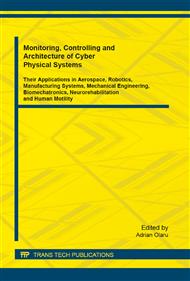p.181
p.192
p.200
p.206
p.215
p.223
p.232
p.242
p.252
Prediction of Forces and Damage at Forming Sheet on Multipoint Die
Abstract:
This paper presents aspects of a simulation based on multi-point die optimization sheet metal deformation using for types of materials: titanium grade 1, aluminium 2024, carbon steel 1010 and 1137. Due to processing methods of the sheet metal appeared, multi-point deformation is a very interesting process industry. For the finite element simulation of sheets metal using multi-point die was chosen Deform 3D software. Simulations were performed for four types of materials used in the construction industry. With the development of computer software, specialized programs appeared on the market forming process simulation, for determining the stresses and strains of the deformed material, the distribution of temperature field, how the material is flowing, the final form of the product, etc. Modeling and numerical simulation of deformation processes can be viewed at any time of their deployment, which allows rethinking solutions for problems arising in the process. Also by this method of finite element simulation can be optimized in the design engineering processes and tools.
Info:
Periodical:
Pages:
215-222
Citation:
Online since:
October 2014
Authors:
Keywords:
Price:
Сopyright:
© 2014 Trans Tech Publications Ltd. All Rights Reserved
Share:
Citation:


